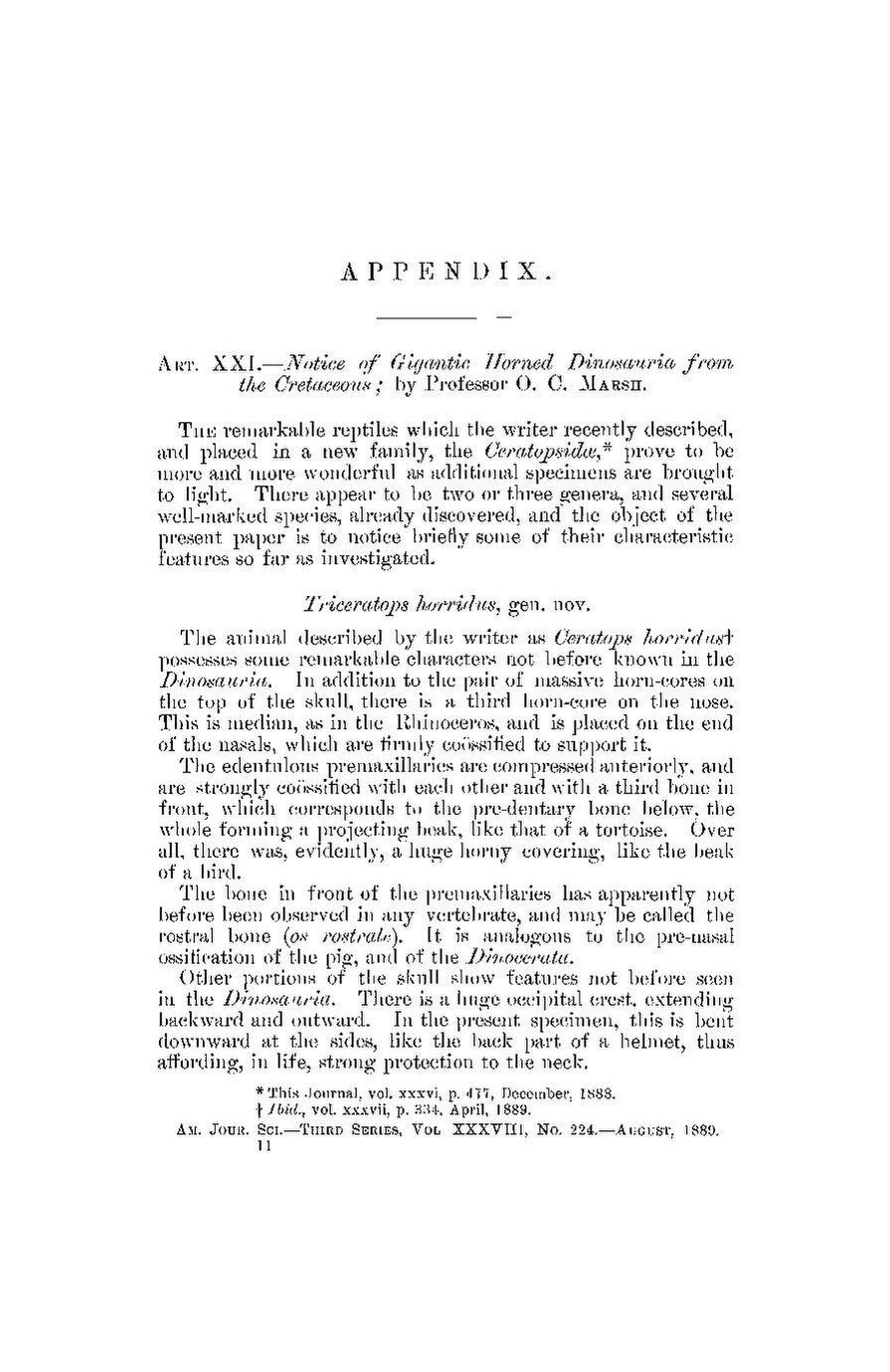APPENDIX.
Art. XXI.— Notice of Gigantic Horned Dinosauria from the Cretaceous; by Professor O. C. Marsh.
The remarkable reptiles which the writer recently described, and placed in a new family, the Ceratopsidæ,[1] prove to be more and more wonderful as additional specimens are brought to light. There appear to be two or three genera, and several well-marked species, already discovered, and the object of the present paper is to notice briefly some of their characteristic features so far as investigated.
Triceratops horridus, gen. nov.
The animal described by the writer as Ceratops horridus[2] possesses some remarkable characters not before known in the Dinosauria. In addition to the pair of massive horn-cores on the top of the skull, there is a third horn-core on the nose. This is median, as in the Rhinoceros, and is placed on the end of the nasals, which are firmly coössified to support it.
The edentulous premaxillaries are compressed anteriorly, and are strongly coösified with each other and with a third bone in front, which corresponds to the pre-dentary bone below, tile whole forming a projecting beak, like that of a tortoise. Over all, there was, evidently, a huge horny covering, like the beak of a bird.
The bone in front of the premaxillaries has apparently not before been observed in any vertebrate, and may be called the rostral bone (os rostrale). It is analogous to the pre-nasal ossification of the pig, and of the Dinocerata.
Other portions of the skull show features not before seen in the Dinosauria. There is a huge occipital crest, extending backward and outward. In the present specimen, this is bent downward at the sides, like the back part of a helmet, thus affording, in life, strong protection to the neck.
Am. Jour. Sci.—Third Series, Vol. XXXVIII, No. 224—August, 1889.

